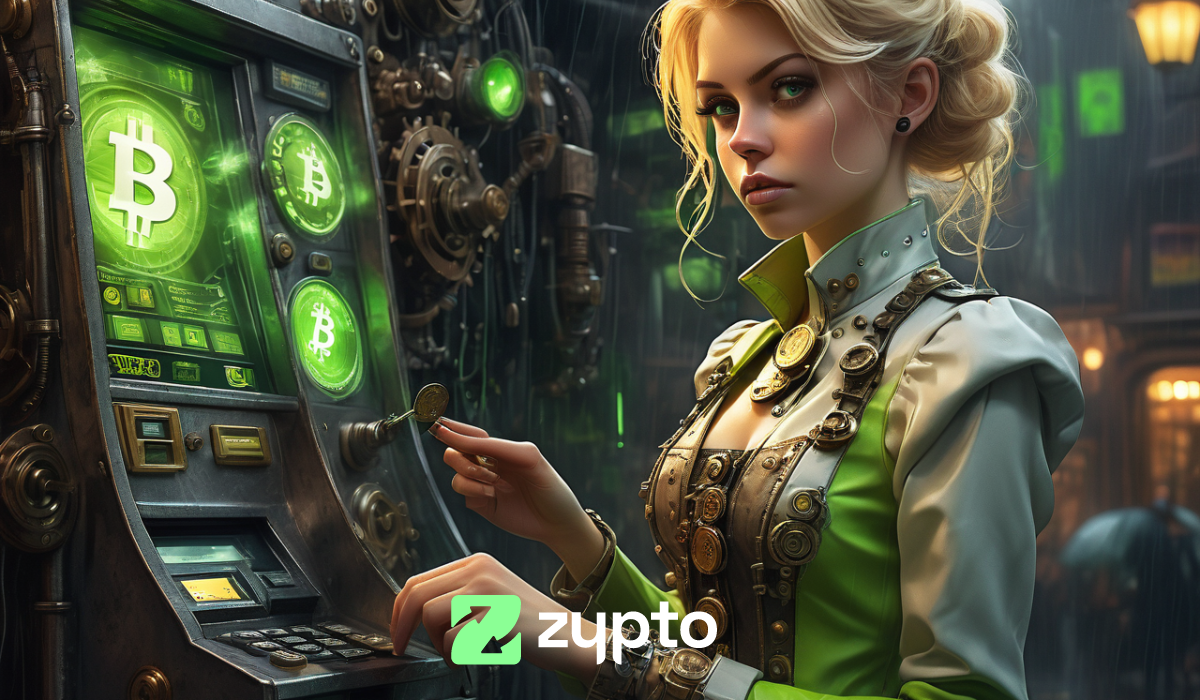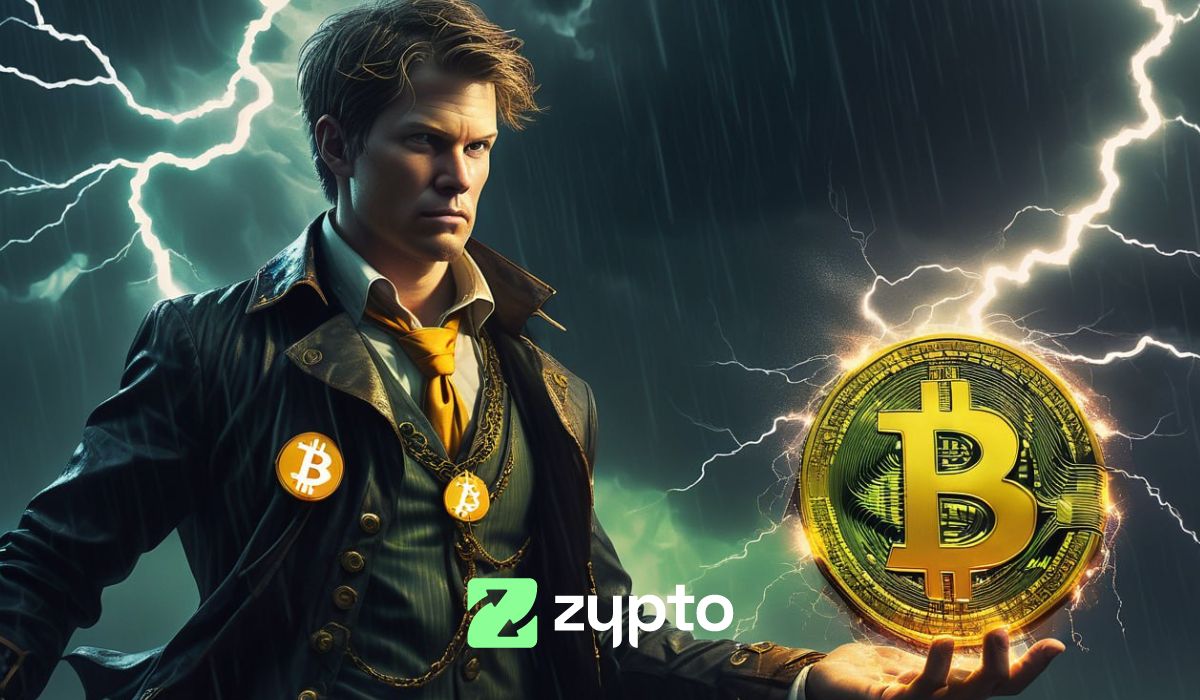Decentralized finance (DeFi) has grown into a global movement, with thousands of blockchains powering everything from payments to NFTs. But each blockchain is still an isolated island – assets on Ethereum can’t naturally move to Ripple, Polygon, or Solana. That lack of connectivity holds DeFi back.
Crypto bridges solve this challenge. By linking chains together, they let assets and data flow across networks, unlocking liquidity, scalability, and new opportunities.
With bridges, blockchains stop competing and start complementing each other – and with Zypto, you can explore the multi-chain future securely in one app.
What is a Crypto Bridge?
A crypto bridge is technology that allows assets to move from one blockchain to another.
For example, imagine you hold XRP in your Ripple wallet but want to use those funds on the Ethereum network for DeFi opportunities. Without a bridge, you’d need to sell XRP, buy ETH, and risk high fees or delays. With a bridge, your XRP can be represented on Ethereum, allowing you to use it directly without leaving the ecosystem.
This interoperability unlocks far more utility from the assets you already own. Instead of being locked into a single chain, your tokens can travel – and work – wherever you need them.

How Do Crypto Bridges Work?
Crypto bridges rely on smart contracts and other blockchain protocols to ensure transfers are secure and verifiable. They usually work in two main ways :
1. Wrapped Asset Method
Your tokens are locked in a smart contract on the source chain. Equivalent “wrapped” tokens are minted on the destination chain. When you send them back, the wrapped tokens are burned and your originals unlocked.
This guarantees that the circulating supply of the asset remains balanced across chains.
2. Liquidity Pool Method
Assets are deposited into liquidity pools on both chains. When you bridge, tokens are withdrawn from the pool on the target chain while the source pool adjusts accordingly.
Smart contracts and algorithms maintain balance, making sure there’s always enough liquidity for smooth transfers.
Both methods keep the value of assets intact, allowing them to move securely across networks without duplication.
Why Crypto Bridges Matter
Crypto bridges aren’t just technical tools – they are what make a truly multi-chain world possible. Their impact spans multiple areas :
Interoperability and scalability
Bridges connect previously isolated blockchains, allowing them to share strengths. A slower, congested chain can tap into a faster one. A chain with limited dApps can access ecosystems with hundreds.
Liquidity and accessibility
Bridges free assets from being siloed on one network. Instead of juggling multiple wallets, you can use one bridge-enabled wallet to move value where you need it. This boosts liquidity across DeFi markets and makes crypto more accessible to everyday users.
Cross-chain transactions made simple
Without bridges, moving assets meant selling them on one chain and rebuying on another – a costly, time-consuming process. Bridges cut out the middle steps. For instance, you can move BTC into Ethereum and use it in DeFi protocols without ever selling.
DeFi expansion
Developers can now build dApps that span multiple blockchains, reaching wider audiences and providing more powerful services. For users, that means direct access to a broader pool of lending markets, staking platforms, NFT projects, and yield opportunities.
Diversification and arbitrage
By moving assets between chains, traders can spread risk and chase opportunities. If yields are higher on one chain, or token prices differ, bridges allow quick repositioning to maximize returns.
Security benefits
Smaller or newer chains can connect to stronger networks, borrowing their security guarantees. This strengthens the overall safety of the ecosystem and gives users more confidence.

Types of Crypto Bridges
Not all bridges work the same way. Here are the main types you’ll encounter :
Chain-to-Chain Bridges
Connect two specific blockchains (e.g. Bitcoin to Ethereum via WBTC). Secure and specialized, but limited in scope.
Multichain Bridges
Hubs that connect multiple chains at once (e.g. Synapse). More versatile, but technically complex.
Cross-Chain Messaging Protocols
Advanced systems (e.g. Wormhole, LayerZero) that go beyond asset transfers, enabling smart contracts and dApps on different chains to talk to each other directly.
Leading Bridges in DeFi
Some of the top solutions today include :
- Synapse Protocol – Bridges EVM and non-EVM chains with governance and integrated swaps.
- Portal (Wormhole) – Connects Ethereum, Solana, Polygon, and more, and also supports NFT transfers.
- Allbridge – Specializes in stablecoin transfers across EVM and non-EVM chains.
- Arbitrum Bridge – Essential for moving assets between Ethereum and Arbitrum, Ethereum’s leading Layer 2.
Zypto and the Multi-Chain Future
Crypto bridges open enormous opportunities, but also risks. Poorly designed bridges have been targeted by hackers, with billions lost. That’s why it’s important to use trusted wallets and platforms.
The Zypto App gives you the safer way to explore cross-chain finance. With Zypto, you can –
- Manage thousands of assets across multiple blockchains
- Connect securely to your favorite DeFi dApps via the in-app browser for swaps, staking, and lending
- Generate QR codes for fast, error-free transfers
- Use global crypto cards, accepted anywhere Visa and Mastercard are accepted
- Pay bills, top up mobiles, and buy thousands of top-brand gift cards instantly with crypto
- Off-ramp USDC for cash at participating MoneyGram locations worldwide
- Pair with the Vault Key Card (VKC) for advanced 3FA offline cold storage
Final Thoughts
Crypto bridges are more than just technical plumbing. They are the highways that connect Web3 – powering liquidity, innovation, and global adoption.
For users who want to explore the multi-chain future safely, Zypto provides everything in one place: multi-chain wallets, dApp connectivity, payments, off-ramps, and secure cold storage.
Download Zypto App today and unlock the full power of cross-chain DeFi.

FAQs
What is a crypto bridge in simple terms?
A crypto bridge lets you move tokens from one blockchain to another. For example, you could send assets from Ripple to Ethereum without selling them first.
How does a crypto bridge work?
Most bridges either lock your original tokens in a smart contract and issue “wrapped” tokens on another chain, or they use liquidity pools on both sides to enable transfers.
Why are crypto bridges important for DeFi?
Bridges make blockchains interoperable. They increase liquidity, enable access to DeFi apps on other networks, and help users get better yields and opportunities.
Are crypto bridges safe?
Bridges can be targets for hacks, especially if they rely on weak smart contracts. To reduce risk, use a trusted wallet like Zypto that supports secure cross-chain operations and offers cold storage with the Vault Key Card.
Can I use Zypto for cross-chain bridging?
Yes. The Zypto App supports multi-chain wallets and built-in swaps, and you can connect securely to your favorite DeFi dApps in-app. Zypto also includes off-ramps like bill pay, gift cards, MoneyGram cash-out, and advanced cold storage via the Vault Key Card.






















Invest in $ZYPTO! Then the only bridge you need to worry about is the one near your super yacht
Cross-chain bridges are really the backbone of the who blockchain system. The work that these teams do makes DeFi become a true possibility!
Thanks for the article. Bridges somewhat mystified me but I never bothered to research them until now. This clears up a lot.
I believe this Article truly makes Cross-Chain Bridges In Crypto Ecosystems easier to understand.🙏👌
But still, I believe for new or unexperienced Defi User, it’s quite a challenge in daily life, to handle Cross-chain Transactions while using Crypto.
To figure out which Wallets and Exchanges to use, how to find fast, secure and least expensive paths, how to swap or on- and offramp…🤔
And this is exactly where ZYPTO can make a huge difference. 🦄❤️🔥
By natively integrating Cross-chain Service into Zyptoapp and Zyptopay, Zypto makes it super easy, flexible and convinient for Customers to handle those things.
Basically making it that easy, the average User might not even notice a difference in the processing of his order.
This way, Zypto us making Crypto Payments extremely easy and accessible, practically Nullifying the Cross-Chain effort for all its Users. 👏🔥
The article “Crypto Bridges: The Technology Behind Interoperability in Decentralized Finance” on ZYPTO explores the critical role of crypto bridges in enabling seamless asset transfers and communication between different blockchain networks. Crypto bridges are essential for promoting interoperability in the decentralized finance (DeFi) space, allowing tokens, NFTs, and other assets to move smoothly across diverse blockchains like Ethereum, Binance Smart Chain, and Solana.
The article highlights several prominent crypto bridges, such as the Synapse Bridge, known for its robust security features and support for multiple blockchains, and the Portal Token Bridge, which facilitates easy asset transfers and includes tools for verifying the origin of digital tokens. These bridges use various mechanisms like locking and minting, burning and minting, and locking and unlocking to manage asset transfers securely and efficiently.
For anyone navigating the DeFi landscape, understanding the function and security measures of different crypto bridges is crucial to ensuring safe and effective cross-chain transactions. Always conduct thorough research, including examining documentation and smart contract audits, before engaging with any crypto bridge to mitigate potential risks.